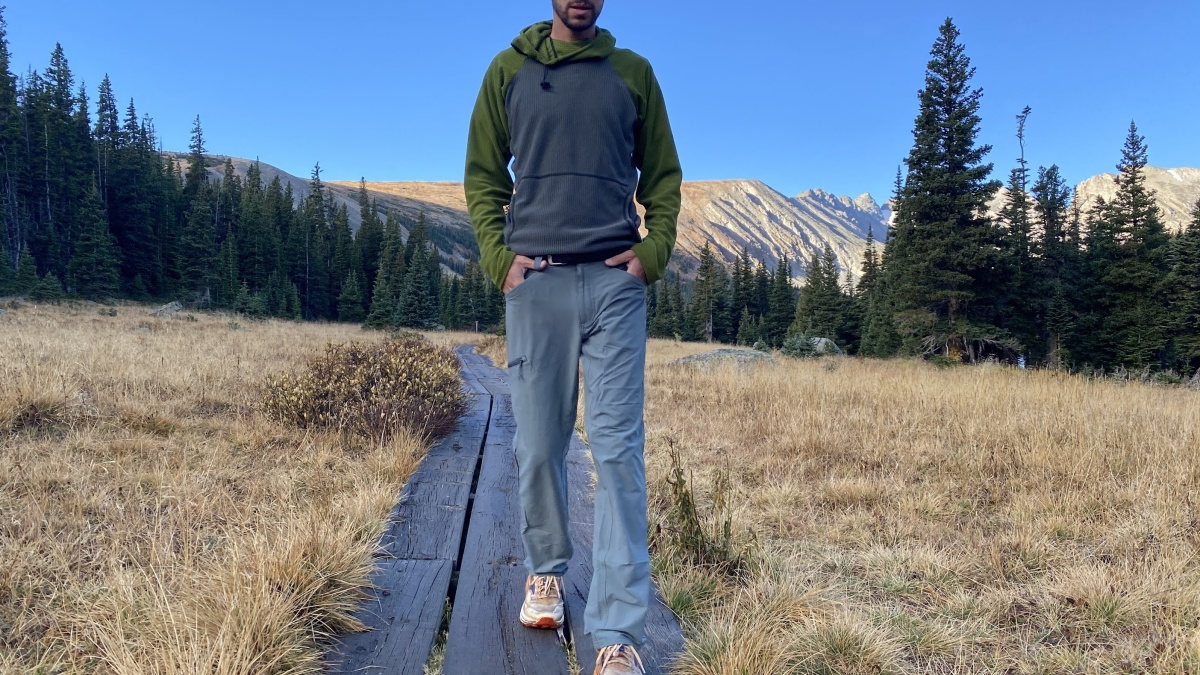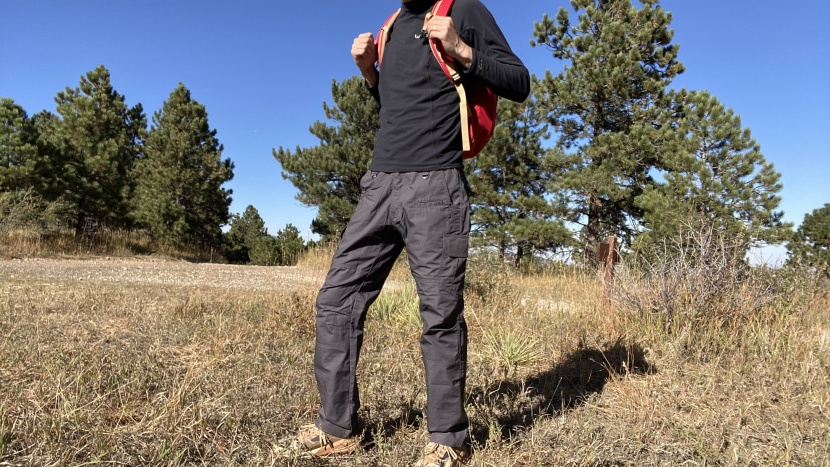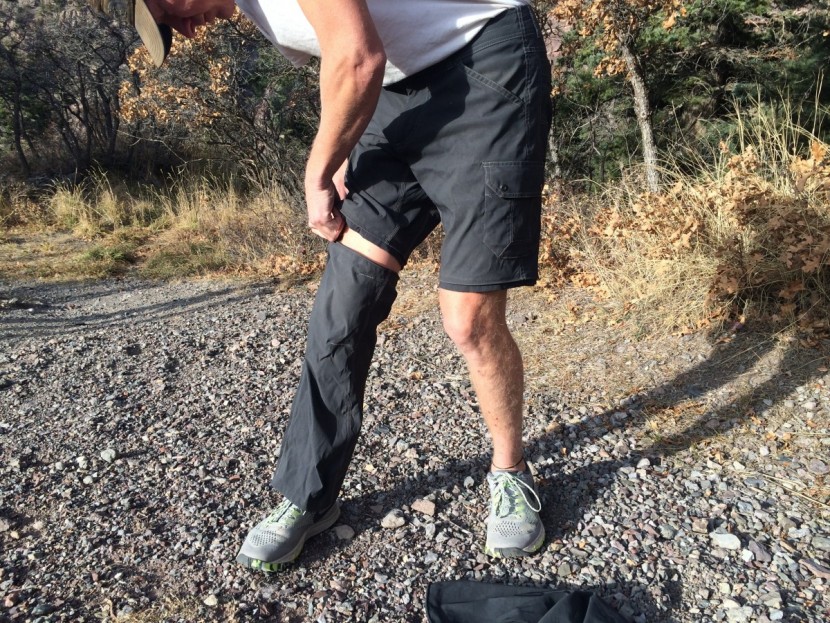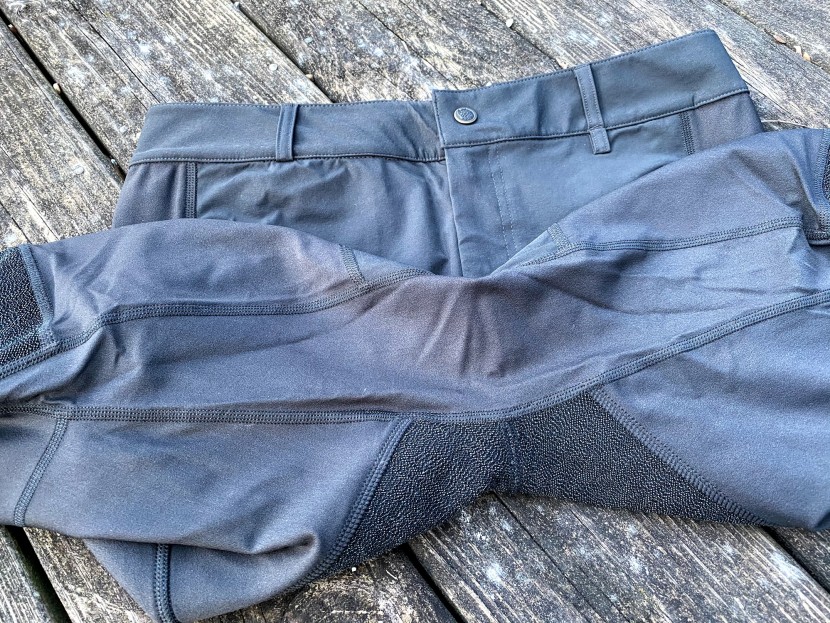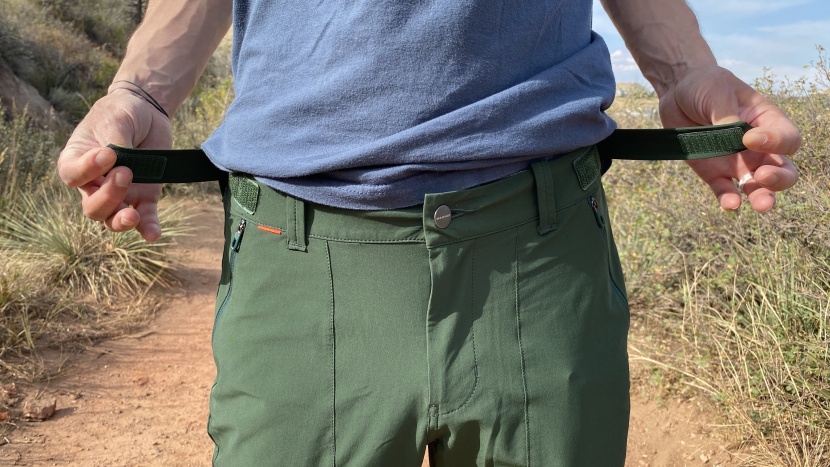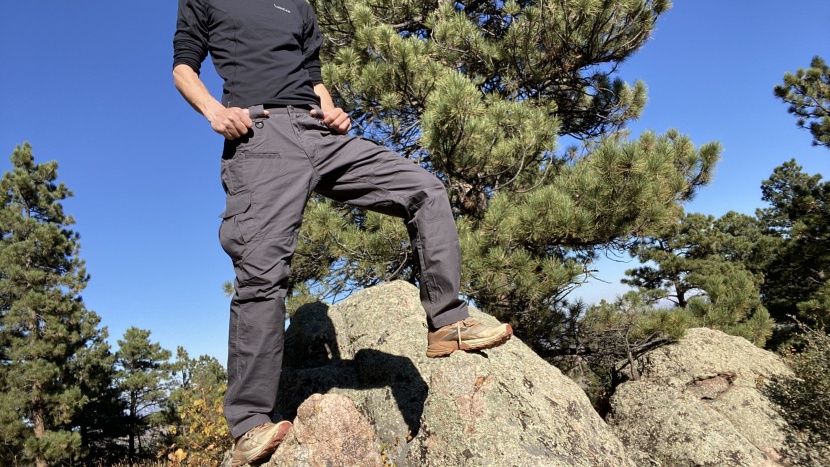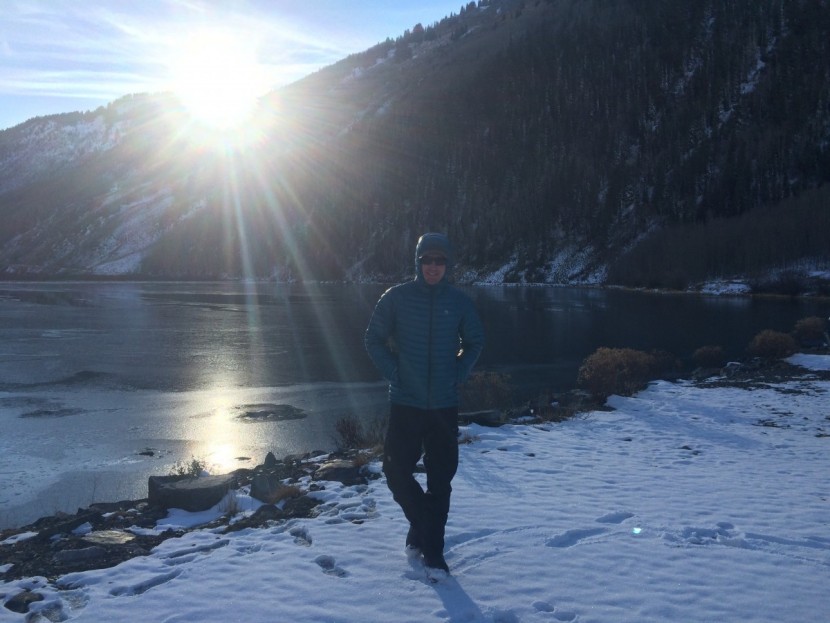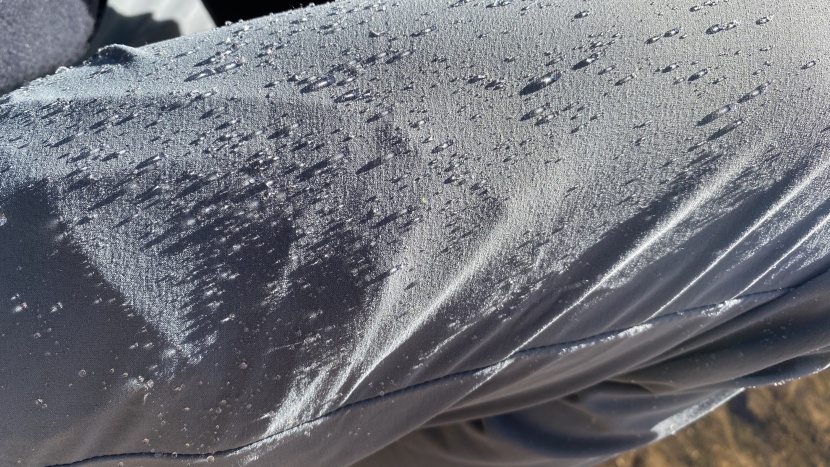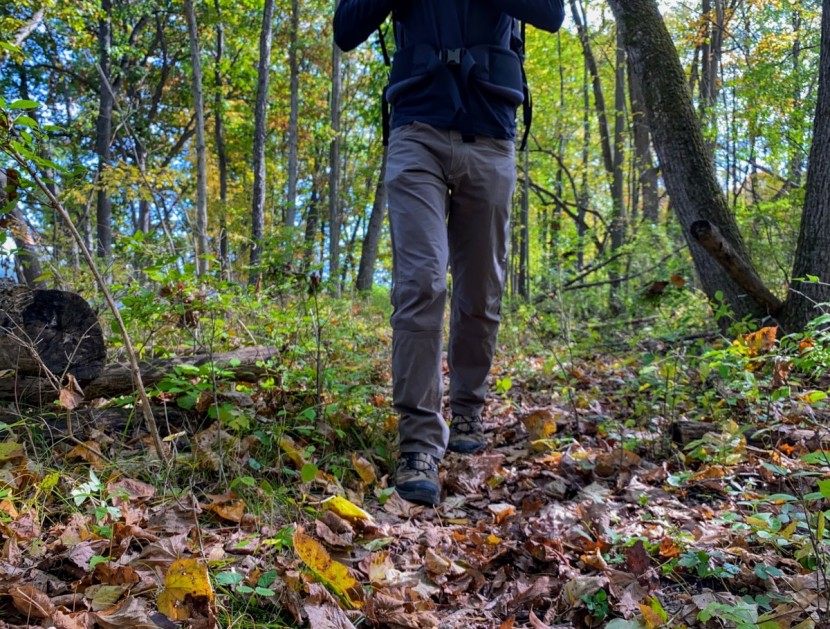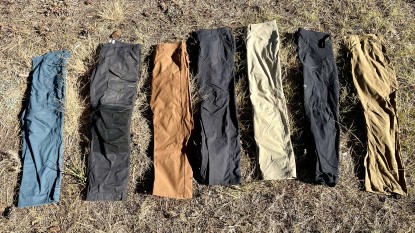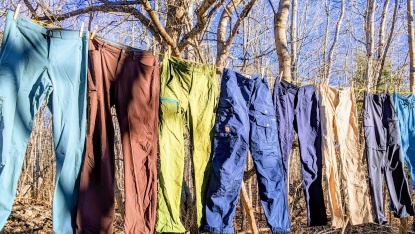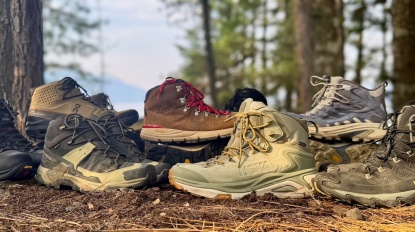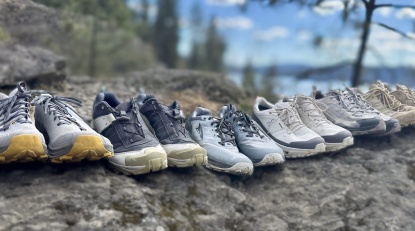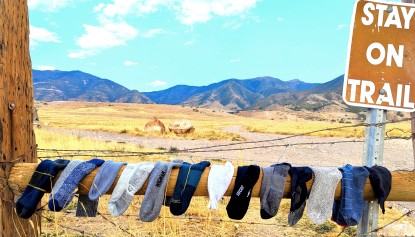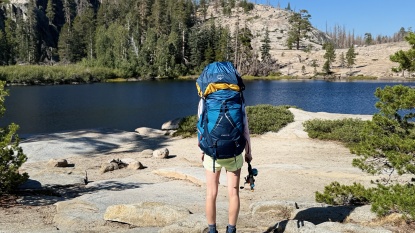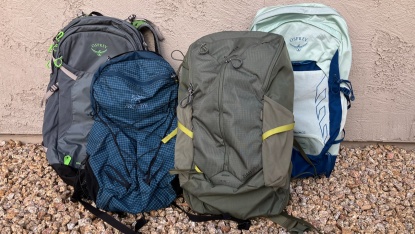There are many factors to consider when picking out a pair of hiking pants. Here, we outline some of the things to look for in each model before you make your next purchase.
Pants in this category are marketed for hiking. However, in practice, most pairs in this category often offer additional versatility. In environments with big temperature swings, models that can be rolled up (or converted into shorts) when the mercury rises can be a lifesaver. If hiking isn't your preferred activity, but you like to work hard outdoors, you may be looking for something that will stand up to the challenges of day-after-day wear. Many people also wear hiking pants for climbing, yoga, or simply as part of their everyday style. Know that just because a model is called a hiking pant, it can almost certainly do a lot more.
Types of Pants
Hiking pants can be divided into a couple of different categories based on their design.
Traditional Pants
These are great for hiking because they provide critical protection in sunny, hot weather but are also warmer than shorts in cooler, windy temperatures. They also limit bug bites, abrasion from rocks and thorns, and keep you drier in the rain. They are best for trips that are both cool and wet, as well as those that are hot with a lot of sun exposure. For an extended backpacking trip, trek, or thru-hike we recommend having a pair of pants. For those looking for a pair of pants that they can also wear in town or at work on casual Friday, traditional pants tend to offer more of a sleek 'lifestyle' look.
Convertible Pants
Convertible pants have a zipper around each leg, usually just above the knee, which allows the wearer to unzip and remove the lower part of the pant leg. Many hikers like the versatility this style offers because it saves space and reduces weight in a backpack (since you don't have to carry a whole other pair of shorts). Another benefit to the convertible style is that it's possible to wash the legs — the part of the garment that gets the dirtiest — separately from the rest of the pair. This is especially beneficial if you are on an extended trip and only have the one pair to wear. The leg zippers on convertibles can also be opened halfway to provide a vent without removing the whole leg.
Though some pairs of convertibles require the wearer to remove their shoes or boots to take off the legs, others have a second set of zippers that make it possible to remove them with shoes on. When trying on a pair of convertible pants for the first time, it's also important to assess whether or not the zipper seam chafes — it might feel fine after one mile, but ten more miles of rubbing can get really uncomfortable. Manufacturers will often offer hiking pants in both standard and convertible versions.
Roll-Up Pants
As another alternative to traditional pants, some models come with buttons on the lower leg or elastic in the cuff. Both enable the pants to roll up into a higher capris style or even a pair of balloon-like shorts. These features can offer just enough relief in hot temperatures and are much less of a hassle to adjust mid-activity than a pair of convertibles. Any pair of pants can be rolled up, but formalizing the feature means that the legs will stay in place during activity for as long as you need them to.
Tights
Tights have become increasingly popular in men's clothing lines. The benefits they offer over the other types discussed above are mostly around style preference. However, as a matter of function, it can be helpful to have form-fitting pants if the terrain has a lot of bramble and brush that looser models may otherwise get snagged on.
Sizing, Fit, and Mobility
As a general rule, we prefer hiking pants that are relatively form-fitting but not restrictive. Some people prefer a looser fit, but in our experience, a pair that is too baggy is heavier, flaps in the wind, and gets caught on trailside brush. On the other hand, if a pair of pants is too tight, it will likely cause chafing, will limit mobility, and will likely wear faster around the knees, crotch, and glutes. Models with articulated knees (fabric that is cut to match the shape of a bending leg) and a gusseted crotch (a diamond or strip of fabric in the crotch that makes it roomier and reduces stress on the garment) are typically the most comfortable and offer the most mobility. Materials are also important; pairs with a higher proportion of spandex or elastane (two very common synthetic materials in athletic wear) are often stretchier and more comfortable.
It is worth noting that hiking pants tend to stretch and loosen with the repeated, continuous wear of a backpacking trip, meaning they will feel a little baggier until they are washed and dried again. Hikers also tend to lose weight and inches on their waist during long-distance hikes. For this reason, we recommend looking for a model with an integrated belt, drawstring, or belt loops, which will allow you to adjust the fit if you are going to be on the trail for many weeks.
Climate and Destination
Though hiking pants typically suit a range of weather conditions, some factors will separate pairs that are meant to keep you cool in dry heat versus ones that will insulate you in cooler or wetter climates.
Hot and Dry
Intense heat might inspire you to hike in shorts and forego pants altogether. However, protection from the direct rays of the sun, wind, and spiky flora can make or break a backcountry adventure. In these conditions, convertibles are often a great, flexible option. Lighter fabrics offer valuable protection without the heft. It is also important to consider the breathability of your pants, as well as the color, which we talk more about below. We typically hike in shorts if we are heading out in the heat for one day, but we think that pants are an essential piece of clothing for multi-day hikes.
Cool or Wet
For spring, fall, or hiking at high elevations, we tend to almost exclusively wear pants because of the protection they offer against cold and wind. One significant consideration is that the spring and fall can bring wetter weather in many of the most popular backpacking regions — mixed with colder temperatures, and you have the ingredients for hypothermia. If you are caught out in a rainstorm, you will likely want pants that repel water well. A reliable durable water-repellent (DWR) coating is a must in these conditions, as well as nylon fabrics, which absorb much less water than cotton and dry significantly faster. With this in mind, almost any of the pants in this review work well. If we are likely to regularly encounter cold weather and rain, we are going to bring fully waterproof rain pants to use when needed.
DWR Coatings and Weather Protection
Most manufacturers will use a durable water-repellant (DWR) coating on the outside of many outdoor garments. Especially in the case of waterproof clothing like hardshell jackets or pants, the DWR coating is essential to keep water off the face of the fabric so that it can maintain its breathability. Hiking pants are not typically fully waterproof, but a DWR coating can offer enough water resistance to keep you comfortable. If left untreated, the (usually nylon) fabric would absorb and retain water, leaving you soaked in a rainstorm.
DWR coatings will help your pants shed the water from a gentle rain before it has the opportunity to soak through, but in most cases, will not keep you dry in a real downpour. Also, DWR coatings wear off over time, especially if you subject your pants to especially abrasive activities or wash them often. Naturally, we notice that the coating tends to wear off first in the areas around the knees, lower thighs, and butt. We recommend re-applying it to ensure your pants continue to perform. A good option is Nikwax, which you can apply using your washing machine at home. It is also worth noting that not all DWR coatings are created equally, and protection can vary widely.
UPF Rating
Though all garments naturally offer a bit of protection from ultraviolet rays, many of the hiking pants we reviewed specifically market their UPF rating. Especially when hiking at high altitudes, in the summer, or in the desert, protection from the sun is one of the main advantages of wearing hiking pants instead of shorts.
What is the Difference Between UPF and SPF?SPF (Sun Protection Factor) measures the amount of time it takes skin to burn, which is why it is common in sunscreens. UPF Rating (Ultraviolet Protection Factor) is a rating for clothing that measures the amount of UV radiation that reaches your skin through the fabric.
What Do the Ratings Mean?Like an SPF rating for sunscreen, the higher the UPF number, the more protection the garment offers. For instance, a shirt with a rating of 25 allows approximately 1/25, or 4% of the sun's UV rays through, and a pair of pants with a UPF of 50+ allows less than 2 percent (1/50). Clothes with a rating of under 15 UPF are not allowed to claim an official UPF rating in the U.S., but for comparison, a plain white cotton t-shirt has a rating of about 5-8 UPF, allowing about 20 percent of the sun's rays through, which is still far more effective than wearing nothing at all.
How Does it Work?Clothing receives a UPF protection rating based on a couple of different factors: construction, dyes, and treatments. The two most common synthetics, nylon and polyester, both do a great job of repelling the sun's rays. Manufactured in a dense, tight weave, the fabric itself can block most UV light. Certain dyes also affect the amount of radiation that can penetrate through the garment. The color has no effect, but the dye itself, which can have UV sun-protective properties, adds to the garment's rating. Lastly, specific chemical treatments can be added to the clothing to boost its rating.
Do You Even Need Clothes with a UPF Factor?All clothes protect against the sun's rays to some degree, and most likely, you have never gotten a sunburn underneath your shirt. However, people with very fair skin or those who burn easily will especially benefit from extra protection from UPF-rated clothing (see our favorite sun hats and protective sun shirts). If you are traveling to within the tropics, high altitude, or areas near water or snowfields, UPF-rated clothing is for you. You'll also want to take care of your eyes with UV-blocking sunglasses.
Color
Color can be an overlooked aspect when selecting an outdoor garment. Most people pick the color of their pants or other clothing based on style, that is, what looks the best. In practice, color can make a big difference, especially in the sun. Luckily, all of the pants in our review come in a few different colors, so this shouldn't affect which garment you select, but it is something to consider once you have chosen the pair you want to buy.
In hot, sunny weather, we prefer white, tan, beige, or other light-colored garments. In colder climates, we prefer black and other dark colors. The color of your pants not only affects how hot they feel in the sun but also how quickly they will dry out. White and other light colors reflect light, so they absorb much less radiant heat, keeping you cooler and less sweaty. Black and dark colors absorb heat from the sun, making for warmer wear.
Conclusion
A good pair of hiking pants can be a real lifesaver out on the trail, and it pays to have the right type for your adventure. Whether you are in the desert heat or cold and rainy climates, there are a lot of options to choose from. We hope that this article and our hiking pants review help you find that perfect pair.

